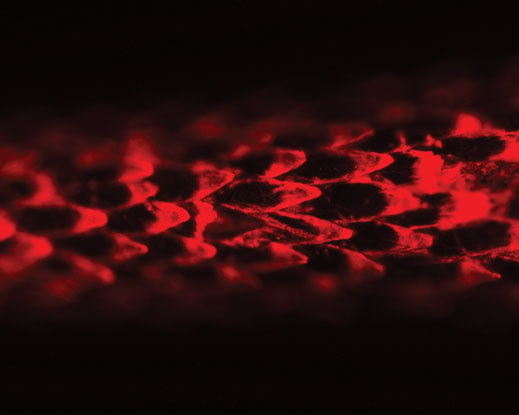Anyone unfortunate enough to encounter a porcupine’s quills knows that they go in much more easily than they come out. Researchers at MIT and Brigham and Women’s Hospital now hope to exploit the porcupine quill’s unique properties to develop new types of medical devices.

In a recent study, the researchers characterized, for the first time, the forces needed for quills to enter and exit the skin. They also created artificial devices with the same mechanical features as the quills.
“With further research, biomaterials modeled on porcupine quills could provide a new class of adhesive materials,” says Institute Professor Robert Langer, a senior author on the study. The researchers say that such adhesives would be very useful for patients who have undergone gastric or intestinal surgery. These surgical incisions are now sealed with sutures or staples, which can leak and cause complications.
The team studied the North American porcupine, which fends off predators with about 30,000 barbed quills. “Evolution is the best problem-solver,” says study author Jeffrey Karp, codirector of the Brigham’s Center for Regenerative Therapeutics. The quills’ features could inspire not just stickier adhesives but less painful needles.
Each quill is several centimeters long, and the four millimeters at the tip are covered with microscopic barbs (shown at left). The researchers showed that the barbs localize penetration forces, allowing the quills to tear through tissue fibers very easily—just as a serrated knife cuts through tomato skin far more cleanly than a straight-edged knife. When the quill is pulled out, the barbs act like anchors that keep it in place. After creating a prototype adhesive patch with an array of barbed quills on one side, the researchers found that it required 30 times more energy to remove than a patch that had quills without barbs.
Langer and Karp introduced the concept of gecko-inspired medical bandages in 2008; however, “these require a reactive glue to adhere to wet tissues, while porcupine-quill-inspired adhesives attach to tissues beautifully without requiring the use of reactive chemistry,” Karp says. “They are extremely versatile and potentially universal in their application.”
Keep Reading
Most Popular
Large language models can do jaw-dropping things. But nobody knows exactly why.
And that's a problem. Figuring it out is one of the biggest scientific puzzles of our time and a crucial step towards controlling more powerful future models.
The problem with plug-in hybrids? Their drivers.
Plug-in hybrids are often sold as a transition to EVs, but new data from Europe shows we’re still underestimating the emissions they produce.
Google DeepMind’s new generative model makes Super Mario–like games from scratch
Genie learns how to control games by watching hours and hours of video. It could help train next-gen robots too.
How scientists traced a mysterious covid case back to six toilets
When wastewater surveillance turns into a hunt for a single infected individual, the ethics get tricky.
Stay connected
Get the latest updates from
MIT Technology Review
Discover special offers, top stories, upcoming events, and more.